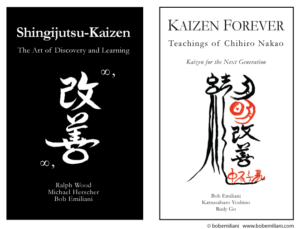The big benefit of TPS and Lean is the change from batch-and-queue processing to one-piece flow. This is what generates huge business impact in terms of lower cost, higher quality, shorter lead-times, higher throughput, better safety, and so on. But over the years, the focus on Lean tools, driven by conservative business leaders, has led to improvement without much business impact. That’s no good. People have lost sight of the fundamental importance of changing from centuries-old supply-driven batch-and-queue processing to modern demand-driven one-piece flow.

To generate a large positive business impact, processes must be organized in the sequence in which value is added. That means separately positioned processes must be connected to one another in very close proximity. To do that, you have to move people and equipment. A Lean company is a moving company. In the never-ending search for improved material and information flow, equipment and people are moved around every day somewhere in the company. The processing environment should look different on a daily or weekly basis.

Changing from separately positioned batch processes to a flowline generates enormous problems related to operator loading, cycle-time mismatch, bottlenecks, and inventory build-ups. In order to correct that, you have to do some basic industrial engineering work: time studies. To do time studies, you need a stopwatch. A Lean company is a speedy company. People’s ideas and creativity are applied every day to find ways to reduce queue time and improve material and information flow. Seeing people doing time studies should be a daily occurrence. A speedy Lean company does things quickly.
When I visit companies, I see lots of boards and metrics and 5S and huddles and talking – but no change in the location of people and equipment. From one visit to the next, people and equipment are still in the same place. And I never see stopwatches or people doing time studies. From one visit to the next, there is still large amounts of queue (stagnation) time within and between processes. This style of Lean practice is static (and low energy). And it reflects the reality that the organization has not broken free of the status quo.
Changing how work is performed must be done with care and respect — but not just on the shop or office shop floor. Moving equipment and people around and measuring cycle times and reducing queue times should be done for all processes — work processes and especially management processes as these are usually major bottlenecks in organizations. The practice of Lean must be dynamic (and high energy).
If you are not doing these things somewhere in your company every day, then you are missing out on the biggest gains that Lean has to offer. A3 reports, gemba walks, kata, value stream maps, and similar tools should not be your primary focus. Your primary focus should be to establish and forever improve material and information flow. To do that you must understand and practice Toyota-style kaizen continuously. These two books will help get you started.

